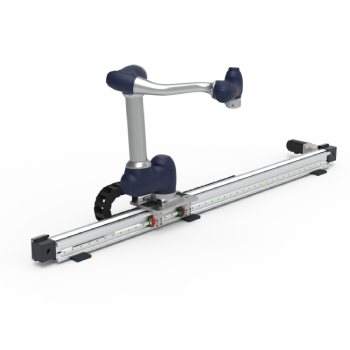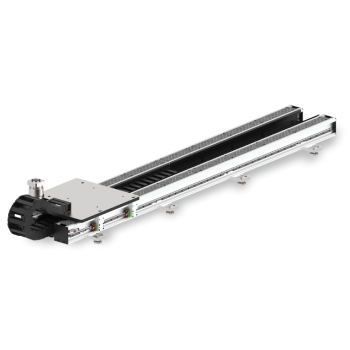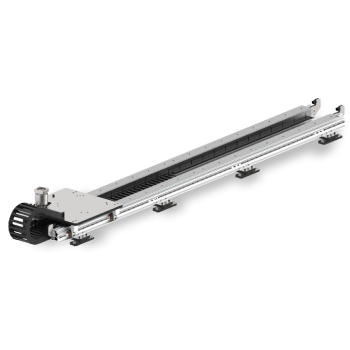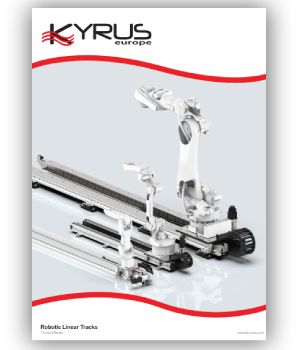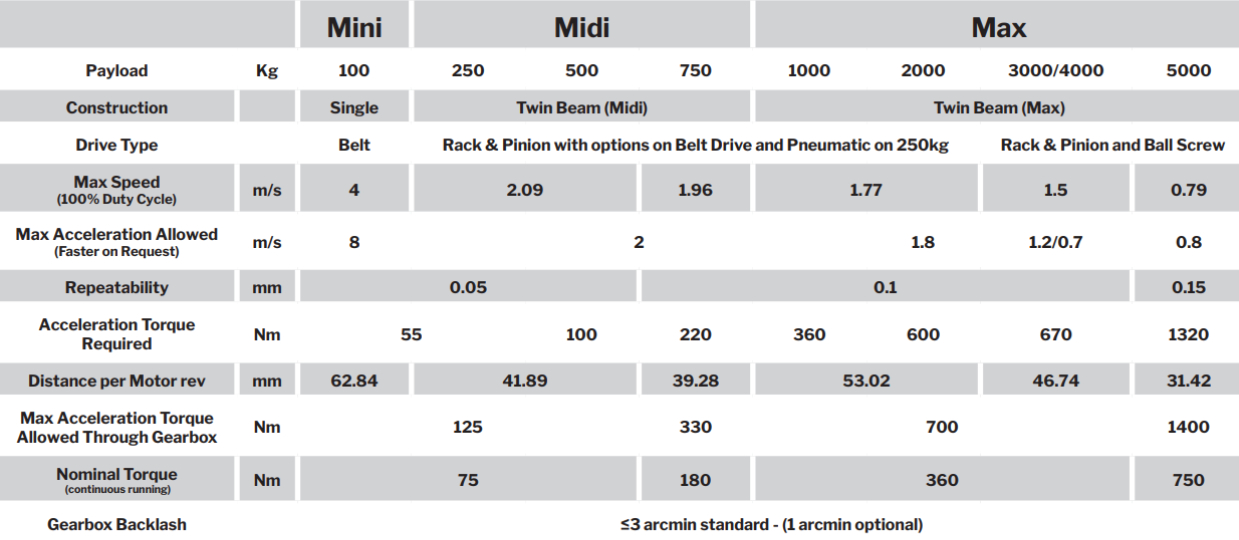Robot Linear Track
Enquire Today
FAQ's
A robot linear track is a mechanical piece of equipment designed to support the movement of a robot in a linear way, either horizontally or vertically.
Linear tracks are the most widely used type of automation track. A simple drag chain type system is commonly associated with a linear track, however there are many types of linear tracks that have been developed for different applications.
Linear tracks can simply be attached onto a factory floor or wall and dragged along by a machine, however there are some more complex solutions which can be attached to an actual chassis of a robot. The idea is that the track comes as standard and the robot itself has been designed to 'snap' onto the tracks. In this way it's easy for robotics manufacturers to design their robots without having to worry about designing tracks along with them. The main idea behind linear automation is that it doesn't require any human interaction.
It can be moved along by a machine itself, usually via an electric screw drive or by the mechanical movement of gear wheels.
Robot linear tracks serve to extend the working area and reach of an industrial robot by moving it along its tracks. Common applications for this kind of robotic automation include welding, assembly, painting, machine tending, and palletising.
Outside of manufacturing, robot linear tracks are becoming a more common feature in homes – such as those for moving walls or panels.
A seventh axis on a robot refers to a linear transfer unit – such as a linear track, belt, or screw, for example.
Up until this point, all axes are an extension of the capabilities of a stationary robot. Adding extra axes to a robot extends its working envelope (or work area); this enables the robot to operate between multiple workstations or over a long workpiece. A seventh axis furthermore increases the work envelope through linear movement across the length of its guide.
Rather than purchasing additional robots to cover this reach, or larger robots, a seventh axis can instead save you money as it offers an alternative – manipulating your existing robot. One linear transfer unit can moreover host multiple articulated robots, extending the capabilities of your business.
Robot Linear Tracks
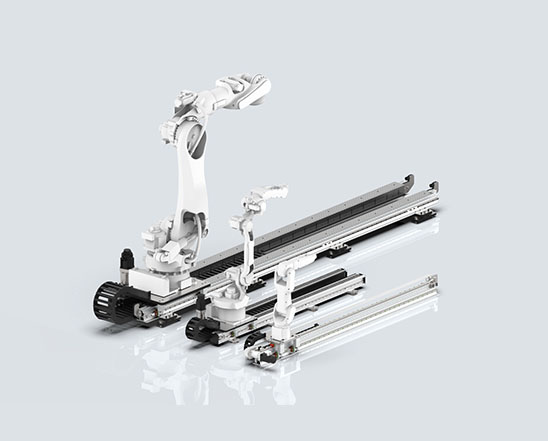
Today, a large portion of factories and warehouses around the world contain robots that perform many different tasks. Whilst there are many types of automation machinery to encompass these tasks, one essential component to making the functioning of this process both smooth and safe is the linear track. Kyrus manufactures modular linear tracks, extendable to any length, to ensure your automated processes can transcend their own physical limitations.
Linear track robotic technology has its origins in the early 1800s, but their widespread use did not occur until the mid-1900s. During that time, several technologies were created that made linear track robotics possible. The first of these was called an end effector, which refers to the part of a robot arm used for gripping or manipulating parts. The first end effector was the gripper, which tightly grasped objects in its pincers. Later, an articulated wrist assumed the role of creating more-complex movements in industrial robot arms. This, alongside the invention of the linear track to facilitate the mobility of the robot, made the automated workplace a ground-breaking, efficient, and safer place to work.
Kyrus continues to add to these innovations within the robotics industry through the linear track, dedicated to increasing the capabilities of your robot. Kyrus creates three linear track ranges - the HiGlyde Max, Midi, and Mini - to ensure all your linear automation needs are met.
Kyrus has provided automation components for a variety of sectors needing our help. These include, but are not limited to:
- Robotics and automation
- Manufacturing
- Aerospace
- Automotive
- Food Industry
- Pharmaceuticals
- Packaging
- General Warehousing
Kyrus’ linear tracks are designed for a variety of applications, increasing the potential of your automation without compromising on safety.:
- Made from aluminium extrusions, unique to Kyrus
- Fully modular, and can be extended to any length
- A range of drive options, including rack and pinion and ball screw drives
- Able to be mounted to floor, wall, or ceiling
- Compatible with optional extras, such as additional carriages, robot risers and auto lubrication
- Low mounted precision linear guide rail for unrivalled stability and rigidity with helical rack for flawless running
- System-specific end stops adjustable feet with levelling screws and cross joining plates to match load requirements
- Anti-slip chequer plate with central cable management system
- Integrated swing in gearbox housing allow for easy adjustments
